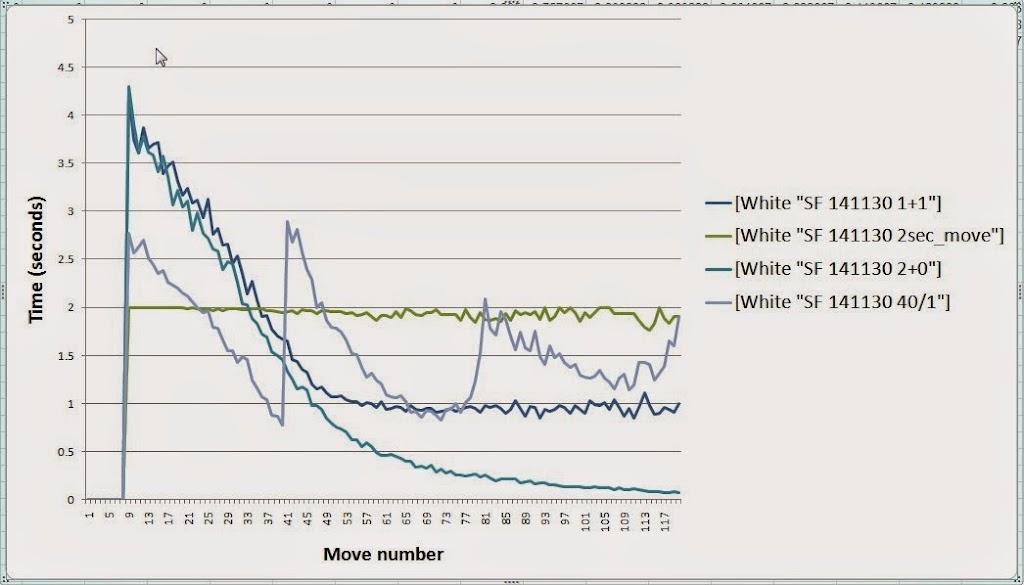Code: Select all
Score of SF500 vs SF250: 1748 - 216 - 2036 [0.692] 4000
ELO difference: 140.21 +/- 7.40
Finished matchThe importance of these 10 moves segments in the overall 140 Elo points gain of SF 500ms/move versus SF 250ms/move is the following:

Spoiler: the database used is SF at 500ms/move versus 250ms/move, very short time control. The short time control used might affect somehow the shape of Elo gains and importance of these 10-movers. At LTC it might look a bit differently. Aside from this, the remarks would be:
1/ The opening phase of the game contributes with no more than 25% of the total. People often hype the importance of the opening phase of the game, while the bulk, about 65% of outcomes, is determined in the middlegame.
2/ Elo gain is logarithmic with used time: Elo ~ ln (t2/t1). In our case total Elo gain is about 140 Elo points, and the formula is Elo gain = 202 * ln(t2/t1), with t2 =500ms, t1=250ms. Therefore necessary Time Usage is proportional to exp(Elo gain / 202), and this is valid on 10-moves intervals too. As Elo gains per intervals is much smaller than 202 Elo points, the shape of the "ideal" Time Usage is very close to the plot above of Elo gains. This shape is the shape of the "ideal time usage", as an envelope of time usage (disregarding particularities of each move). Some three years ago Ferdinand Mosca computed an averaged over many games time usage envelope of SF at 4 different time controls: 1'+ 1'', 2s/move, 2' per game, and 40/1':

- a/ The "ideal" time usage is closest to 2' per game time control. If small increment is used to not lose on time, then it should be much smaller that 1/60 of the main time used by Ferdinand, closer to 1/600 or even 1/1000
b/ The shape of time usage of "total time per game" (closest to ideal) seems to not be ideal too. It overstates the opening phase of game, while more time should be used in the middlegame. I often see engines using by move 25-30 about half of the time per move used in the opening, while it seems it should be fairly stable from move 1 to move 30.



